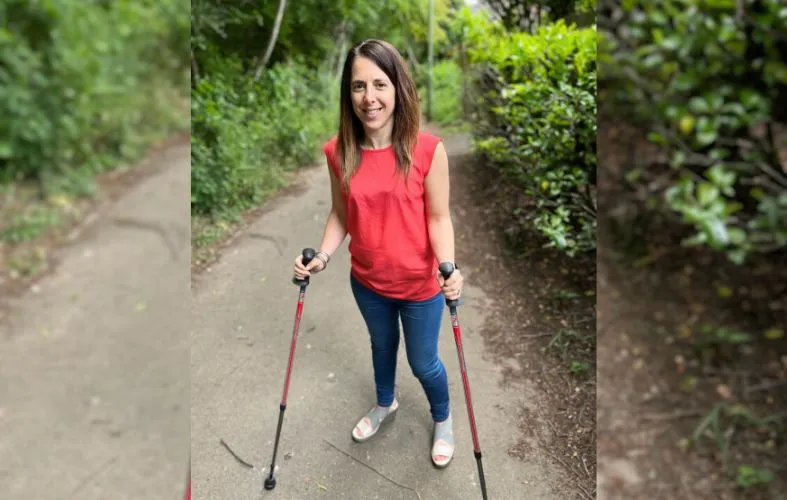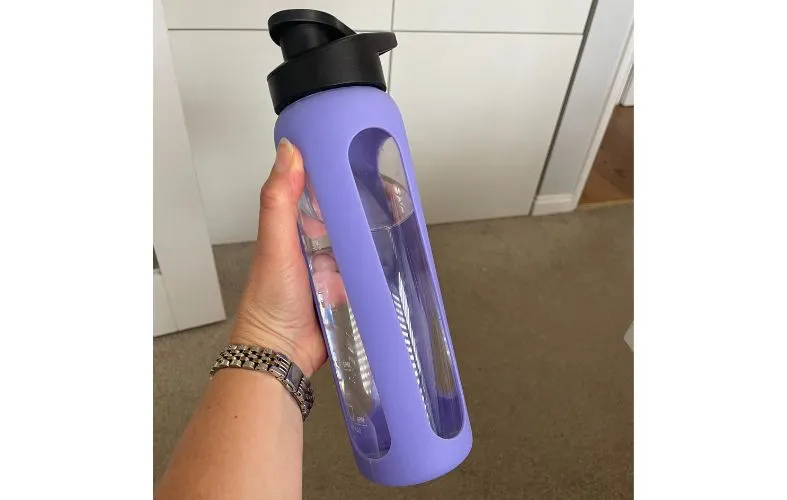
Share this page with friends
The trials and tribulations of my bladder: Living with MS
Let's face it: most women over 40, especially those who’ve had children, experience some
bladder issues. It's a common topic of laughter among my friends and me. But for me,
there's an added layer to this story—living with multiple sclerosis (MS), which makes
managing my bladder even more challenging.
bladder issues. It's a common topic of laughter among my friends and me. But for me,
there's an added layer to this story—living with multiple sclerosis (MS), which makes
managing my bladder even more challenging.
My journey with MS
I was diagnosed with MS shortly after my son was born, meaning I've been dealing with it foralmost 22 years. Looking back, the symptoms likely began earlier. I'm grateful I had 13 years before MS started to impact my daily life. However, things took a significant turn in 2018
when my mobility worsened, making my bladder issues more pronounced.
when my mobility worsened, making my bladder issues more pronounced.
For those unfamiliar, MS is an autoimmune disease with no known cure, partly because its exact cause remains a mystery. Symptoms can vary widely from person to person, and the disease has different types and stages. Personally, I don’t focus on these details. Instead, I strive to live as healthily as possible. For me, MS manifests as weakness in my legs, balance problems, spasticity, mobility challenges, and, of course, bladder issues.

Navigating bladder management
Hydration Routine: To manage my bladder effectively, I stick to a hydration routine of drinking about 2 to 4 litres of water daily. I start my morning with half a pint of water as soon as I wake up, followed by an 800ml bottle that I refill three times throughout the day. I don’t always finish the last refill, but I do my best. My beverage choices are mostly water, though, in winter, I occasionally enjoy ginger or nettle tea, and I sometimes indulge in a cocktail or non-alcoholic prosecco—my days of wild parties are behind me.

Planning My Day: Planning my day around my bladder is crucial. If I have a morning outing, I wake up at 6 a.m., drink my half pint, and allow at least two hours before leaving the house. Any less, and I likely won’t drink anything. This routine applies throughout the day, although I’m more flexible in the afternoons and can leave the house after an hour if I'm sure there’s an accessible toilet at my destination. I know it must be very frustrating for my husband as I can’t just sporadically leave the house or go out without planning my bladder needs and water consumption.
My Water Intake Schedule: My daily water intake follows a strict schedule:
- Morning: I drink my first half pint upon waking, have breakfast an hour later, fill my bottle, and pour another half pint into a glass with lemon juice before eating. I also take a gut health powder, which uses up a portion of my morning bottle, so there’s not much left. Frequent bathroom trips mark my early hours, but by 11 a.m., things settle down.
- Afternoon: I refill my bottle at lunchtime and sip it through the afternoon.
- Evening: I refill again at dinner, aiming to finish by 8 or 8:30 p.m. This routine usually prevents nighttime trips to the bathroom which thankfully aren’t a big concern for me.
Facing the challenges
Hormonal Fluctuations: I notice an increase in bladder activity around my ovulation cycle. It’s intriguing how this also affects my mobility, often worsening it.
Mobility and Bladder Control: A significant challenge is my weak muscles. Once my brain signals that I need to wee, I have limited time to reach the toilet. Mobility issues make this even tougher, leading to occasional leaks or accidents, which are incredibly embarrassing. Over time, I’ve learned to manage my water intake and timing better and address the psychological aspect of the problem. My brain tends to overthink the toileting situation!
I read about "Doorkey syndrome"—the urge to rush to the toilet as soon as you get home. To combat this, I started waiting a few minutes before rushing to the toilet, gradually extending the time. This approach has significantly improved my situation.
Weakness: My body doesn’t act the way it used to so it’s much harder for me to control my muscles and that can have a real impact on the bladder. My control isn’t too bad as long as I don’t leave it too long between needing the toilet and going. I have tried using gadgets to help improve my muscles in that area but I find committing to the time and being consistent with it too much for my busy life.
My Safety Net: Liners
Liners are my daily safety net. Wearing one almost every day helps calm my brain, reassuring me that a leak isn’t a catastrophe. This has made a tremendous difference. For many, bladder issues aren’t psychological, but for me, mental factors play a significant role. Without MS, I’d likely have better bladder control and be quicker to the toilet.
Introducing Purpl: Easing the Financial Burden
The cost of liners is just one of many additional expenses associated with being disabled. To help with these extra costs, I created Purpl, a disabled discount community. Purpl offers useful information, inspiring member stories, and discounts on everyday products and services. My long-term goal is to establish a foundation to provide grants for essential equipment or services that the disabled community can’t afford.
To sign up to Purpl you will need to upload evidence of your disability status - we accept many different documents so please read our guide to successful verification
Purpl members can get a discount code for Incontinence Choice:
15% of your first order with Incontinence Choice
15% of your first order with Incontinence Choice






